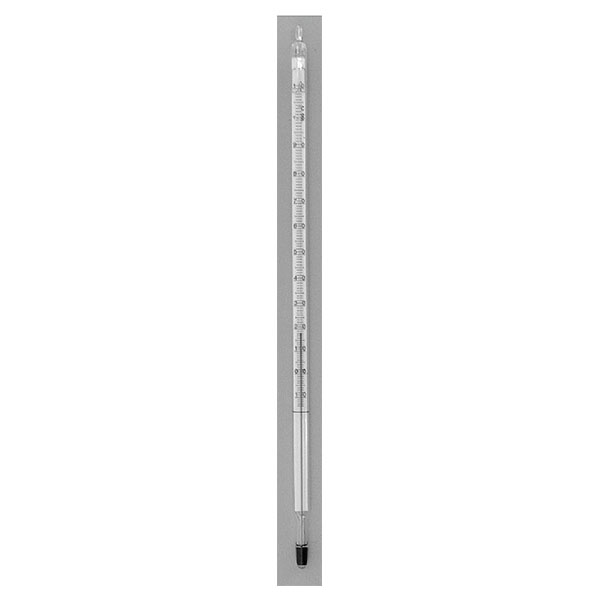The laboratory thermometer is an instrument used to measure the temperature of a body. They are common instruments used on a daily basis, for example to measure the temperature in an environment, or body temperature. They also play an important role in the laboratory.
Thermometers calculate temperature as a function of a physical quantity, which varies with temperature. For example, there are models that use the thermal expansion of a liquid or gaseous substance. Others use electrical resistance, or other physical and dynamic quantities.
Digital or analogue laboratory thermometer
The liquid thermometer uses the thermal expansion of a liquid in calculating temperature. The mercury thermometer is included in this category, less common today but still used in the laboratory. The thermometric liquid is chosen so that its coefficient of thermal expansion is approximately 100 times greater than the glass tube in which it is contained. This is to avoid errors in temperature calculation.
.
When the temperature increases or decreases, the liquid inside the glass tube expands or contracts. That is, it in turn increases or decreases its volume. As a result, it rises or falls in the glass tube, and corresponds to a different level on the gradation scale along its height. Graduation in Italy is calculated in degrees Celsius. The different gradation accuracy is one of the features that distinguishes the various models of liquid thermometers.

Digital thermometer
Digital models are very common in modern chemistry, as they allow a more accurate and faster temperature calculation than liquid models. Digital thermometers use a sensor consisting of a thermistor, which is powered by electricity. The sensor detects temperature changes through the electrical resistance. These are shown on a display, with which digital thermometers are equipped. The 2-level display allows simultaneous viewing of the current measurement and the maximum and minimum temperatures detected during the work cycle.
.
There are more or less sophisticated digital models, depending on their possible functions. Their internal processor guarantees high precision and repeatability of measurements over the entire scale. Unlike liquid models, digital models can measure in different graduation scales, ranging from Celsius to Fahrenheit. One of the features that distinguishes digital models from each other is the measuring range. There are thermometers that measure a scale between - 50° and + 150° C, while other more sophisticated models measure between - 50° and 1350° C.












